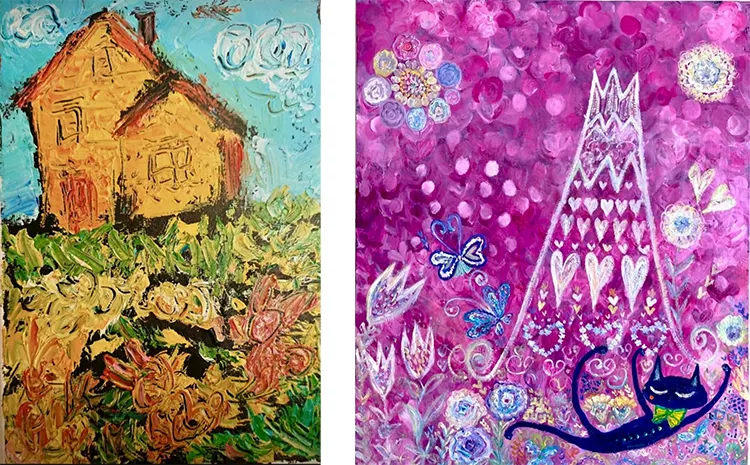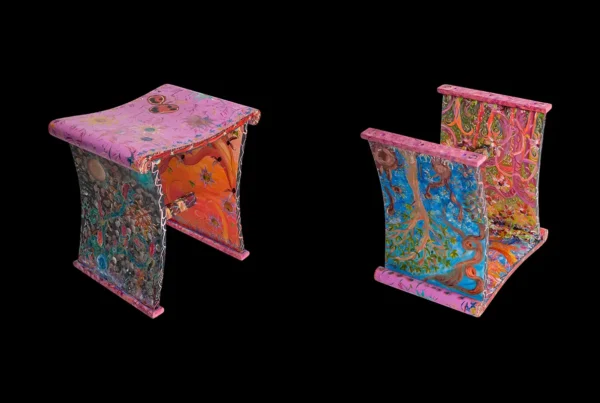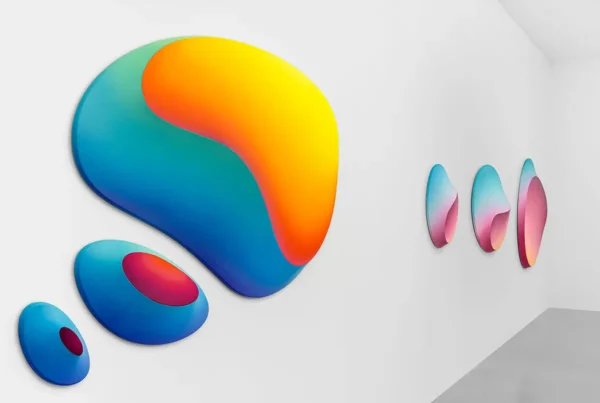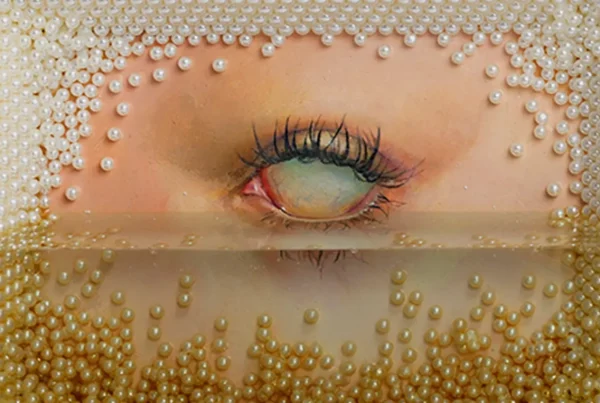“I aim to create art that makes it possible for viewers to feel as though they can see music and hear colors.”
A Symphony for the Senses
In the hands of Amika Matsumoto, a brush becomes an instrument and a canvas becomes a concert hall. An oil painter with a vision rooted in the poetic interplay between color and sound, Matsumoto has built a singular practice around the sensory crossover between sight and music. Her work seeks to do more than simply please the eye—it aims to awaken the entire emotional spectrum, creating a resonant space where color behaves like melody and visual rhythm carries the emotional depth of a musical score. This distinctive approach sets her apart in a contemporary art landscape often dominated by conceptual detachment.
Her artistic path is shaped by a lifelong fascination with the emotional potency of both visual and auditory elements. From an early age, she was attuned to how a single hue could echo a mood or how a composition of colors could act like a symphony, stirring memories and quieting the mind. Though tone-deaf and without musical training, Matsumoto discovered an intuitive way to “compose” through painting. Each work becomes a unique concert—one performed through color harmonies, shape-driven tempo, and an expressive cadence of brushwork. This ability to transcribe music into visual form is no gimmick; it’s the core of her practice, one that turns limitations into lyrical invention.
Matsumoto’s career has been marked by steady acclaim and growing visibility. Her 2024 solo exhibition at Tokyo’s Ginza Gallery & Links 81 stands as a testament to her growing influence, following notable appearances in exhibitions such as Dreams2023 and Japan Contemporaries 4 in New York. Her art has reached audiences through prestigious venues like the National Art Center in Tokyo and the Fukuoka Asian Art Museum, consistently garnering praise for its emotive resonance and sensory fluidity. Matsumoto’s creations don’t just engage—they immerse. In a world saturated with noise, her work offers quiet, transformative space, inviting the viewer to listen with their eyes.
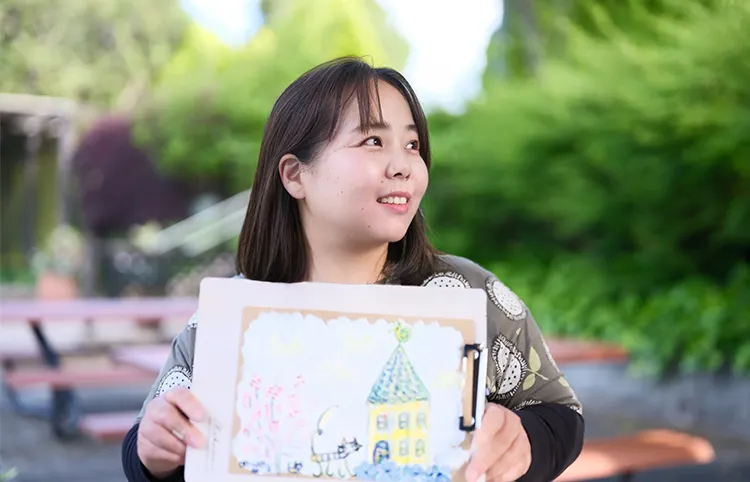
Amika Matsumoto: Where Color Meets Inner Harmony
At the center of Matsumoto’s creative philosophy lies a quiet, internal world that she often retreats into—a vivid imaginary planet born during childhood that still offers refuge and inspiration today. Rather than relying on external noise or stimulation, she begins each piece by seeking stillness within herself. For her, this meditative preparation is as essential as the act of painting itself. She doesn’t require a grand studio or perfect light; what matters is the mental landscape from which her ideas emerge. This approach grants her work a rare depth, as if each painting emerges not from a moment, but from a deeply rooted emotional atmosphere.
Despite the outward complexity of her visual compositions, Matsumoto’s process often begins with simple rituals. She draws imaginative strength from seemingly unrelated sources—videos of the French countryside, cinematic vistas, or even household moments like preparing a family meal. These visual impressions serve as emotional cues, quietly planting the seeds for future works. While viewers may only see the final product, each brushstroke is layered with these intimate, lived experiences. They are the quiet rhythms that guide her hand, allowing her to shape visual symphonies that echo far beyond the surface.
This sense of immersion and introspection is carried through to her thematic focus. Her paintings are often designed to encourage a return to the self, prompting reflection and emotional stillness. Whether inspired by an imaginary world or by the hues of a sunlit field in rural France, her goal remains constant: to craft pieces that gently invite the viewer into a heightened sensory awareness. She doesn’t strive to impose meaning, but to offer a moment of peace, a kind of visual sanctuary where color becomes a language of solace.
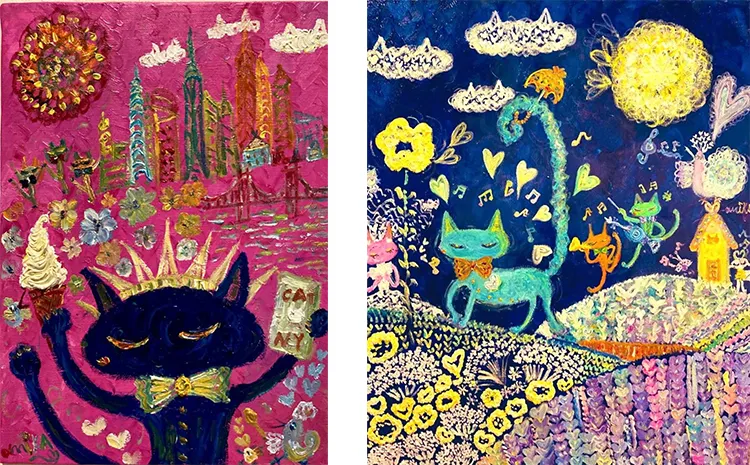
From Stillness to Sound: The Alchemy of Medium and Influence
Matsumoto’s choice of oil paint is no accident—it’s a deliberate commitment to a medium that demands time, patience, and an ability to work with uncertainty. Early in her career, while raising young children, she gravitated toward oil painting because it allowed for intermittent, contemplative work. Unlike faster mediums like acrylic, oil gave her the space to build slowly, each layer carrying the emotional momentum of the last. Over time, this practical choice grew into a passionate relationship with the medium. The act of layering itself became musical, a quiet echo of the crescendo and decrescendo that defines a sonata.
Her artistic voice has also been shaped by three enduring influences—Marc Chagall, Vincent van Gogh, and Kiyoshi Yamashita—each offering her a different kind of inspiration. Chagall’s dreamlike defiance of gravity introduced Matsumoto to the idea of visual freedom, of crafting worlds unconstrained by realism. Yamashita’s raw, unaffected honesty affirmed the importance of emotional sincerity, encouraging her to remain faithful to her inner vision. And from Van Gogh, she drew an understanding of energetic presence—how color can radiate feeling, and how brushwork can suggest not just motion, but life itself. Together, these influences inform a practice rooted in both emotional truth and imaginative liberation.
One painting that encapsulates her philosophy is Mt. Fuji Yay 2023, a whimsical yet deeply personal piece featuring a cat in adoration of Japan’s iconic mountain. The artwork radiates freedom, lightness, and quiet joy—qualities that Matsumoto herself sought during its creation. It reflects not only her artistic goals but her emotional landscape, offering a rare harmony between the personal and the universal. For her, the cat and mountain are more than motifs—they are emotional anchors that represent peace, simplicity, and the boundless nature of love. In a world often defined by chaos, Mt. Fuji Yay 2023 stands as a small but radiant counterpoint.
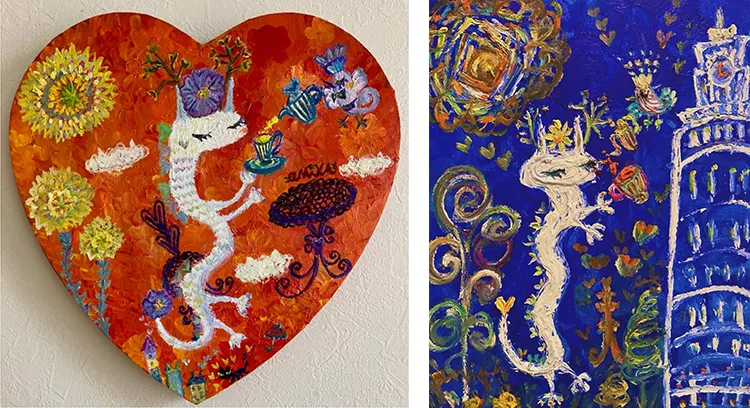
Amika Matsumoto: Painting Toward a Borderless Symphony
While her practice is firmly rooted in painting, Matsumoto’s vision extends well beyond the static canvas. She dreams of an immersive experience that dissolves the traditional boundaries between visual art and live performance—an orchestral projection mapping installation where her paintings animate in real time to the ebb and flow of music. In this conceptual project, she imagines the visuals either responding to the conductor’s direction or guiding the musical improvisation themselves. The result would be a true collaboration between mediums: painting that breathes, and music that sees.
This idea is not just technical ambition—it’s a logical next step in her exploration of sensory convergence. The notion of art existing as a living, evolving experience speaks directly to her belief in creative connection without borders. In this envisioned space, viewers wouldn’t simply observe—they would be enveloped, caught in the tide of sound and image moving in perfect synchronicity. Her ultimate goal is to design a space where color and music don’t accompany each other—they become one and the same, dissolving distinction and drawing the audience into a shared emotional current.
Underlying this vision is a deeper yearning for unity—between senses, between people, and between the inner and outer world. Whether on canvas or in future projection halls, Matsumoto’s work remains centered on emotional resonance. Her paintings may begin in silence, but they are always reaching toward song. By blending influences, mediums, and philosophies, she composes a world where the invisible becomes visible, where emotions take on color, and where every viewer becomes part of an ever-expanding symphony.
